If you’ve been in the SEO game for a while, you probably know very well how to play in the English-speaking markets: the US, UK, Australia, and Canada.
Sometimes, however, it’s necessary–or beneficial– to build links to websites in other countries.
When?
That’s one of the questions we answer in the article. You will also discover the main challenges of international link-building and tips on how to navigate link-building in other countries.
Key takeaways
- International link building involves acquiring backlinks from websites in different countries or regions to support market expansion and increase online visibility globally.
- International link-building differs from national link-building in terms of SEO goals, target audience, language, link sources, and complexity.
- Companies invest in international link-building to target less competitive markets, diversify traffic sources, increase brand exposure, and understand local needs.
- The biggest challenges of international link-building include the lack of suitable domains, the need to pay for links, TLD choice, and language & culture differences.
- You can find international link-building opportunities by analyzing your competitors' backlink profiles, using search operators, searching for local directories, and monitoring unlinked brand mentions.
- Consulting a local expert, looking for similar markets if you can’t find the right opportunities in the target market, buying media packages, building relationships with local partners, and creating dedicated social media profiles are all international link-building best practices.
- Need help with international link-building? The Editorial.Link team has the necessary experience and skills. Get in touch!
What Is International Link-Building?
International link building is the process of acquiring backlinks from websites in different countries or regions.
For example, if your website targets primarily the US market, international link-building may involve acquiring links from Spanish websites.
Normally, this is a part of wider SEO efforts to support market expansion initiatives. For example, you may use international link-building to increase your online visibility in a specific market that you’re planning to enter.
National vs. International Link Building
How is international link-building different from national link-building?
Here are the main differences:
- SEO goals: National link-building aims to improve performance in local search results. On the other hand, international link-building aims to boost results globally.
- Target audience: National link-building focuses on local or country-specific audiences, while international link-building targets multiple countries with diverse audiences.
- Language: National link-building primarily involves one language, whereas international link-building involves content and links in different languages.
- Link Sources: National link-building uses local websites, directories, and media outlets. In contrast, international link-building targets global or region-specific websites, media, and directories.
- Complexity: International link-building campaigns are more complex to manage due to multiple legal, cultural, and SEO standards.
Why Do You Need International Link-Building?
Companies invest in international link-building to boost rankings in search results around the globe.
This allows them to.
- Target less competitive markets: International markets are often less saturated. This makes it easier to rank and build authority.
- Diversify traffic sources: Gaining links from various countries increases traffic from multiple regions. This makes you less dependent on one particular region.
- Increase brand exposure: More links in different regions lead to greater visibility and brand recognition.
- Understand local needs: What people link to in different locations around the globe can give you insights into what content or products are in demand.
Think about it:
Links act as votes of confidence. If somebody links back to your content, they vouch for its quality and send a signal to the search engine algorithm that it’s relevant to the audience.
So, if an American company gets backlinks from a Spanish website, it tells the search engine that the page could also be helpful to the audience from that country, not just the US.
Biggest Challenges Of International Link-Building
International link-building is more complex than local link-building. Here are some of the main challenges that SEOs face when expanding their reach outside the English-speaking world.
Limited link-building opportunities
As mentioned, the competition might not be as fierce in smaller markets, making ranking in search results easier.
However, the opposite might be true as well: smaller markets have fewer relevant sites and, consequently, fewer link-building opportunities.
This may actually increase the competition for backlinks and, consequently, require more creativity and ingenuity to get them.
Buying links is normal practice
Very often, building links in foreign markets doesn’t require any creativity at all. You just need to pay for them.
For example, buying links is very popular in Europe, and there are marketplaces like the WhitePress or German ImpulsQ that give you access to thousands of websites where you can buy links.
Again, the price of backlinks depends on the size of the market and the availability of websites in your niche. You often have to pay more for dofollow links.
This isn’t something unusual. 92% of the SEOs who took part in our 2024 State of Link-Building study are convinced their competitors are buying links.

However, limited opportunities in a specific market may mean you won’t be able to avoid it.
As buying links clearly violates Google’s guidelines, this is a risky strategy and can bite back if you get caught: In the best-case scenario, you lose money, and in the worst, your page gets deindexed.
TLD choice
Your website's top-level domain (TLD) choice has an impact on your international link-building efforts.
A generic TDL, like .com, will work better if you’re trying to grow your visibility and attract traffic from outside your location. For example, if you’re in Poland, such a TLD will make attracting links from other Eastern and Central European countries easier.
On the other hand, if you’re targeting a very specific market, having a country-code TLD may bring better results. Such domains inspire more trust among local audiences.
However, managing multiple local sites is challenging, and the impact of links pointing to the local domain is limited. Their link juice doesn’t compound to support your other sites.
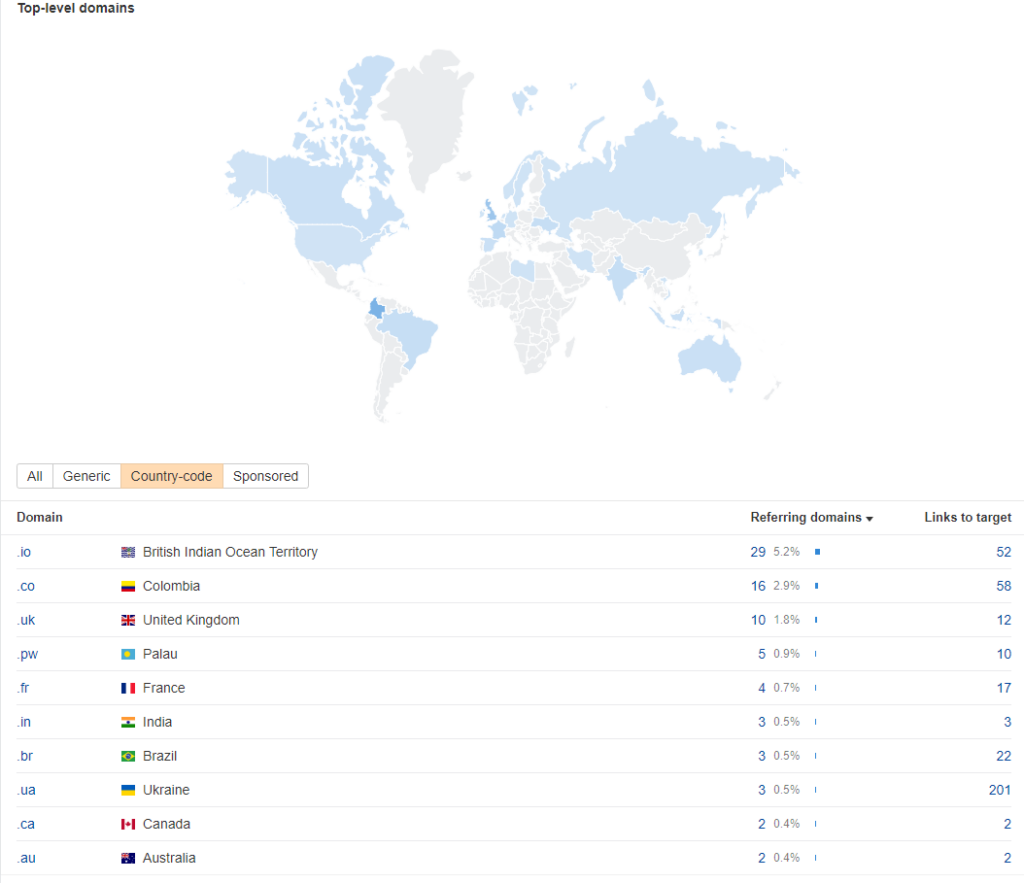
Content localization
When you’re in B2B tech or marketing, it’s easy to forget that lots of people around the globe don’t speak English in their private or professional lives.
The consequence?
Whether you’re hoping to build links organically, for example, through linkable assets, or use tactics like guest posting, your content needs to be in the local language.
And using Google Translate or ChatGPT to convert your content into another language won’t fly.
Such translations are usually of poor quality and don’t take into account the cultural nuances that make the content resonate.
For the best results, you need to hire translators with native-like language command and familiarity with cultural norms. Or better yet, writers who create bespoke content for specific audiences. And someone who will verify the quality before it gets published.
And before you start creating the content, you need to conduct keyword research to make sure you’re targeting relevant topics.
Now, imagine you’re promoting your website across 8-10 locations! The cost of hiring skilled professionals to help you with all of that will add up quickly.
Language and cultural differences
Localization isn’t limited to your landing pages, blog posts, or guest posts.
You also need to localize your outreach campaigns to promote the resources and develop relationships with partners.
That’s a proper minefield for a number of reasons:
For example, in some places like India, Eastern Europe, or Balkan countries, you need to use a much more formal register when reaching out to prospects. In contrast, southern cultures, like Italians or Greeks, are way less formal.
Email isn’t always the best form of communication in certain places. For example, in Asian markets, most business is done via local messaging apps like WeChat, Viber, or Facebook Messenger. They require different language and communication styles.
Phone calls or face-to-face conversations, for example, at conferences or networking events, require even better language proficiency and cultural awareness.
SEO competence
The knowledge of your potential link-building partners may also vary across the globe.
Webmasters in some locations, like Central European countries, tend to have a solid knowledge of SEO. In contrast, others, for example, in Germany, may not be that well-versed in the SEO lingo.
This affects how you communicate with them and how easy it is to find shared understanding.
How to Find International Link-Building Opportunities?
Finding international link-building opportunities relies on the same processes and tactics as national link-building. Here are a few of the top ones.
Analyze your competitors’ backlink profiles
Competitor analysis is a tried-and-tested prospecting tactic and is often the first thing an SEO does when planning a link-building campaign.
First, you can use it to identify the locations where your competitors are getting links.
To do so, use Overview in Ahrefs’ Site Explorer.
Navigate to the Backlink profile tab just below the main scoreboard.
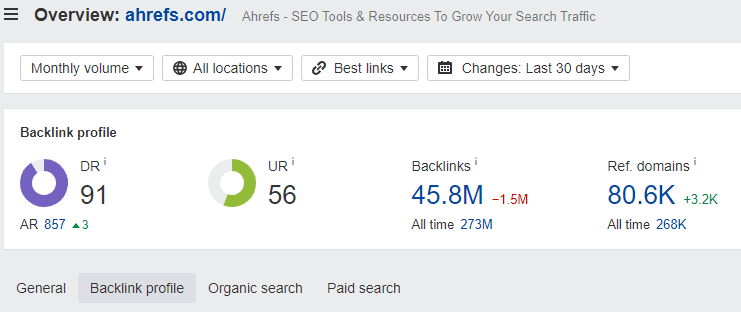
Next, scroll down to view the Top-level domains and filter them by country code. This will give you a breakdown of the main ccTLDs with the number of referring domains and the total number of links.
You can see that Ahrefs is particularly popular in the UK and Germany. These could be the markets to target as their competitor as there’s clearly demand for such a tool there.

Imagine you decide to target the UK domains.
Clicking on the Referring domain number reveals the list of all domains linking to your site, while clicking on the Links to target number shows all links from those domains.
In this way, you know which domains you could potentially target in your campaign, and by analyzing the actual links, you can find out what tactics they use to build the links and what kind of content resonates with local audiences the most.
You can also use Ahrefs to find out what keywords your competitor ranks for in specific locations.
In the Overview, check out Traffic by location and click on the Keywords number.
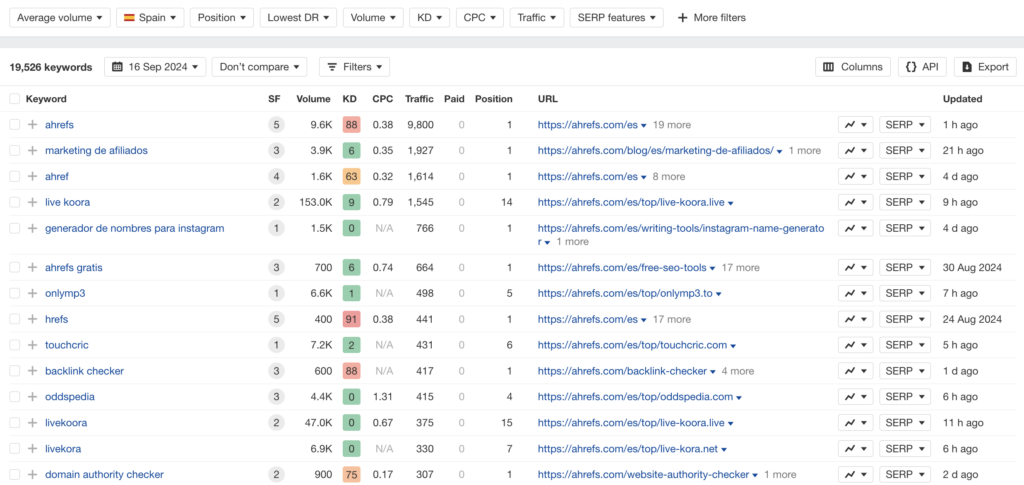
Use search operators
Just like in your country, advanced search operators can help you find link-building prospects.
For example, you can use them to find guest posting opportunities.
Simply search for your keyword (e.g., SEO, product management, etc.) + ‘write for us’ or similar operators. Just remember to narrow down the results to domains with a specific ccTLD (site:.uk).
Here’s an example: site:.uk SEO +”write for us”
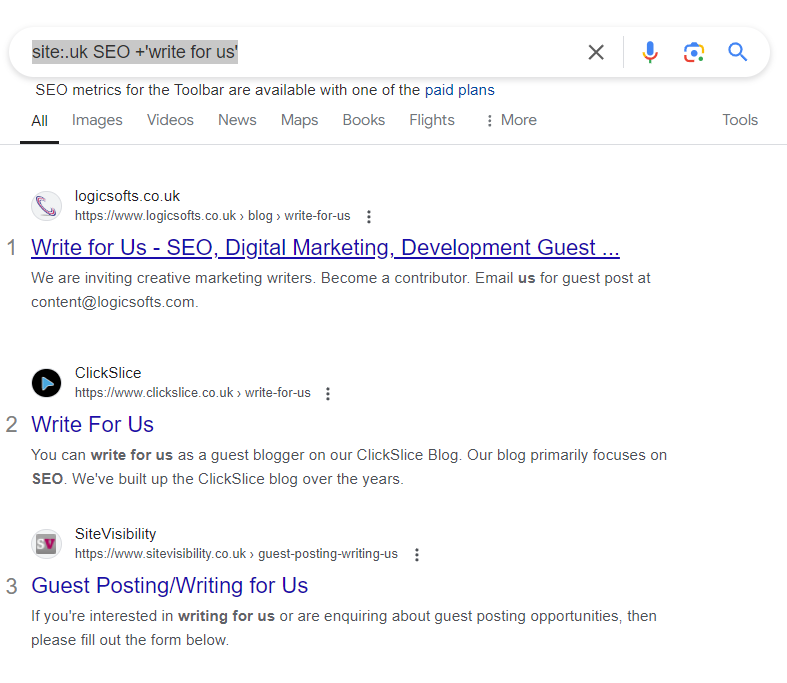
Of course, you may need to tweak the query in countries where English isn’t the mother tongue.
Look for local directories
Listing your business in the local directories is often the easiest way to get your foot in the door.
Finding them is pretty straightforward: Google is your best friend, again.
Searching for ‘best directories in [country]’ will reveal lots of such sites, either directly or through listicles.
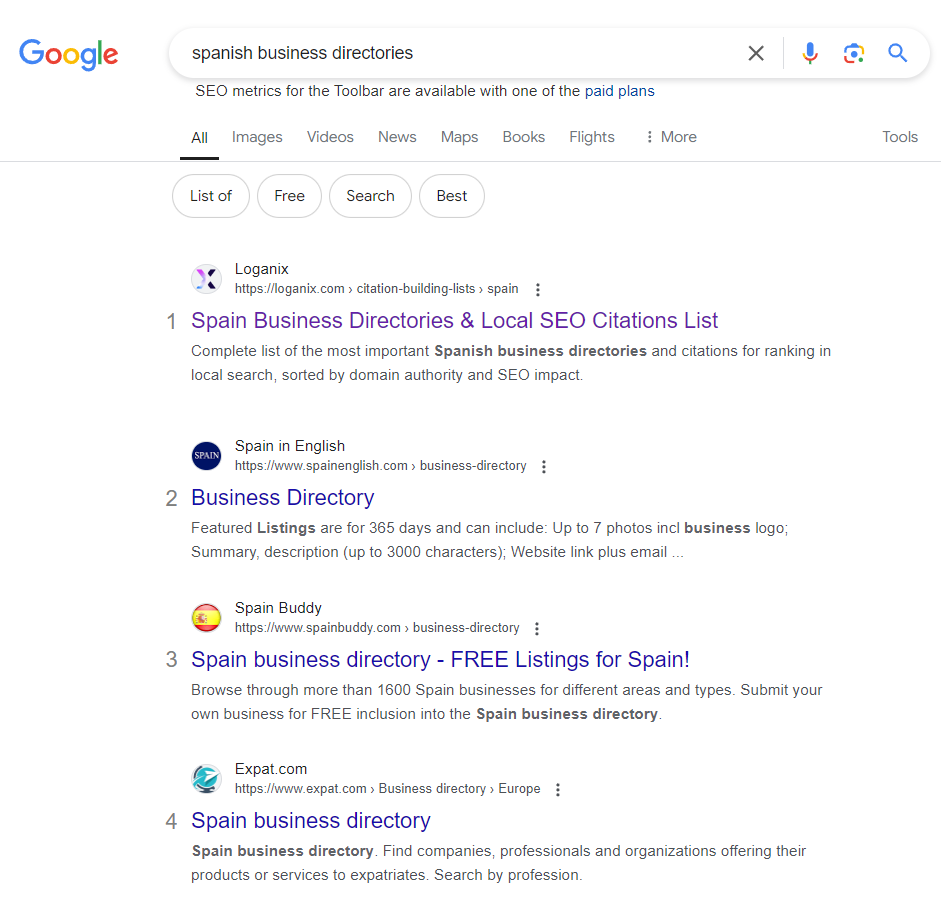
Many well-known directories, like Yelp or Yellow Pages, have localized directories in various target countries, and you can easily find them through search. For example, searching for ‘Yellow Pages Spain’ gets you to Pagillas Amarillas.
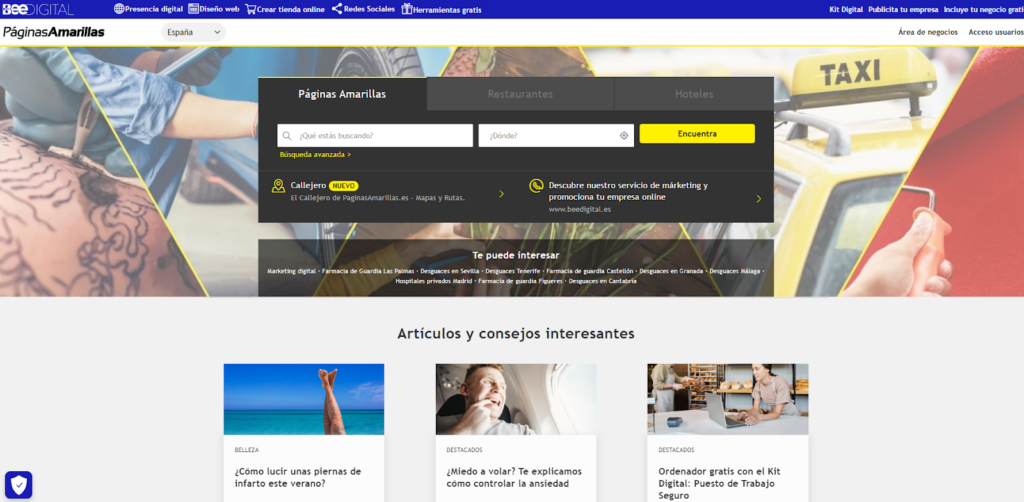
Monitor unlinked brand mentions
Unlinked brand mentions are believed to be easy pickings for link-builders.
That’s because the website is already talking about your brand or product; you don’t need to explain who you are and why they should include you in their content. And for the webmaster, adding a clickable link requires little effort.
The reality is that you will often have to pay for it anyway, and you need to be a well-known business for people to write about you. Which is a big ask for smaller companies entering new markets.
Still, the tactic isn’t as resource-intensive as others, so it’s worth giving it a go.
Here’s how to find them in Ahrefs:
1) In Content Explorer, search for your product, brand, marketing slogan, or leader name, excluding results on your page. For example, “Editorial.Link” -site:editorial.link

2) Add your domain URL as in Highlight unlinked
3) Filter the results by language of your target country, e.g., Spanish, as well as page traffic (50+), website traffic (500+), and DR (30-70).
Once you find pages linking to your site, contact the owners and ask them for the link.
International Link-Building Tips
Let’s wrap up with a few international link-building best practices and tips. To help you get the most out of your link-building budget.
Consult a local expert
I know you already have a kick-ass SEO team with tons of experience running link-building campaigns.
But here’s the thing:
Local markets come with unique characteristics, and what has worked for you in other markets may not work well in the new target one.
So?
Hire a local link-building expert.
Someone who understands the local market and has a well-developed network of contacts.
Such experts can tell you which strategies to use, which ones to avoid, and how to best implement them. They will also be able to advise you on cultural and language nuances.
I get it, experienced consultants aren’t cheap but worth every cent as they help you avoid costly link-building mistakes.
Look for similar markets
As mentioned, link-building opportunities in certain countries might be scarce, especially in niche industries. Such links are harder to get and cost more.
If that’s your situation, look for similar markets
For example, Switzerland and Austria have some of the most expensive backlinks in Europe because of a lack of suitable domains in those countries. However, if you’re after links from pages in the German language, target German sites instead.
Buy media packages
Media packages offer a quick and targeted way to secure backlinks on authoritative local sites.
Such packages bundle sponsored content placements with nofollow backlinks. The articles are tagged as sponsored or advertisement, which means that they’re absolutely kosher when it comes to search engine guidelines.
This approach is costly, with prices going into hundreds of thousands for placements in the likes of Spiegel or Le Monde. However, if you have the resources, it’s an efficient way of gaining high-quality, region-specific links, especially in competitive markets.
Build relationships
Effective link-building depends on relationships, regardless of where you are.
A good network of contacts, like local webmasters or influencers, can open the door to high-quality, organic backlinks.
Focus on developing genuine, long-term relationships rather than just one-off link-building transactions.
How?
By engaging with their social media content, commenting on their blogs, and offering value upfront.
Such efforts are more likely to result in ongoing collaborations and increase your chances of securing valuable backlinks over time.
And reduce your link-building costs.
Reciprocal link-building doesn’t cost anything. And if done carefully, for example, as a 3-way exchange, it shouldn’t get you in the search engines’ bad books.
Create dedicated social media profiles
Links in social media posts or comments don’t pass any PageRank.
However, they’re still an excellent way to promote your content, which can lead to link-building opportunities as the content gets reshared by your audience. And you get to participate in trending conversations and connect with influencers.
This applies to international link-building, too.
The first step is identifying the most popular social networks in the target country.
European, American, and African audiences are likely to hang around the leading social media platforms like Facebook or Instagram, but you won’t get much out of them in China, where you have to use WeChat.
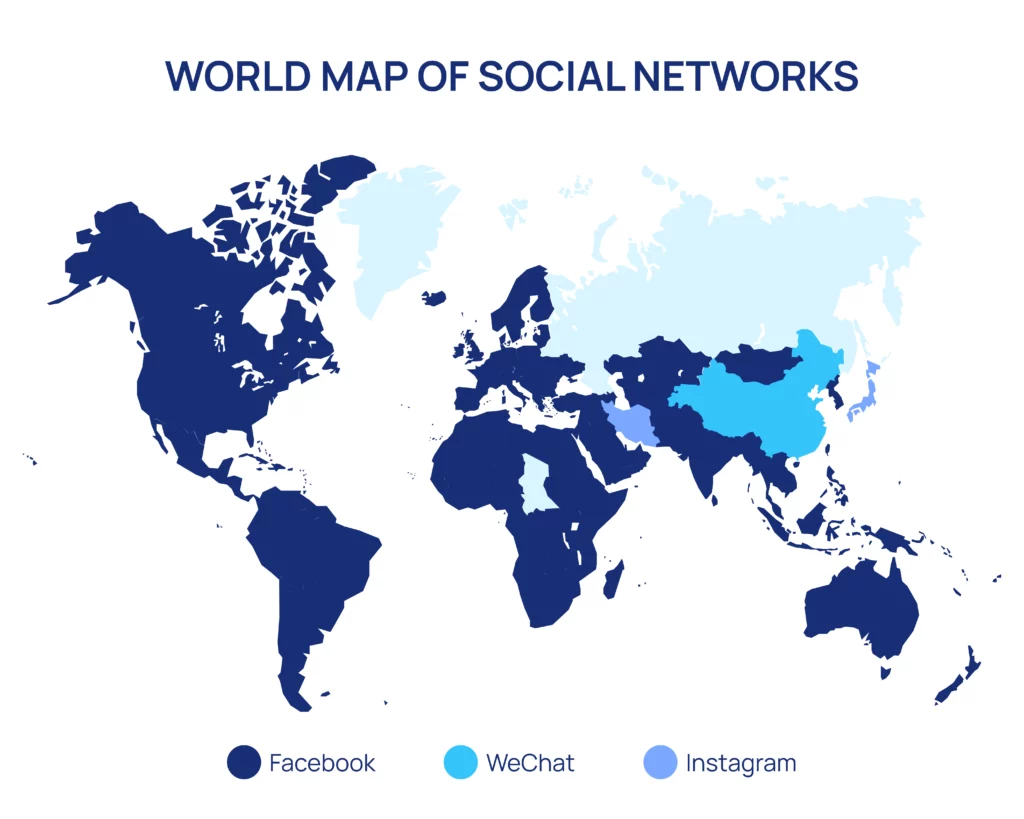
Once you find the right medium, create dedicated social media profiles in local languages. As mentioned, localized content is more likely to resonate with audiences in markets where English isn’t spoken as a native language.
Final Words
International link-building can help you increase your brand’s visibility around the globe and boost your search engine rankings in your target markets.
To successfully build links in non-English speaking countries, you need to know the local language, culture, and SEO practices. And a network of relevant partners.
As an outsider, you often don’t have any of these, so hiring a local link-building agency will save you a lot of time and money.
Looking for a link-building partner? Get in touch with the Editorial.Link team!

